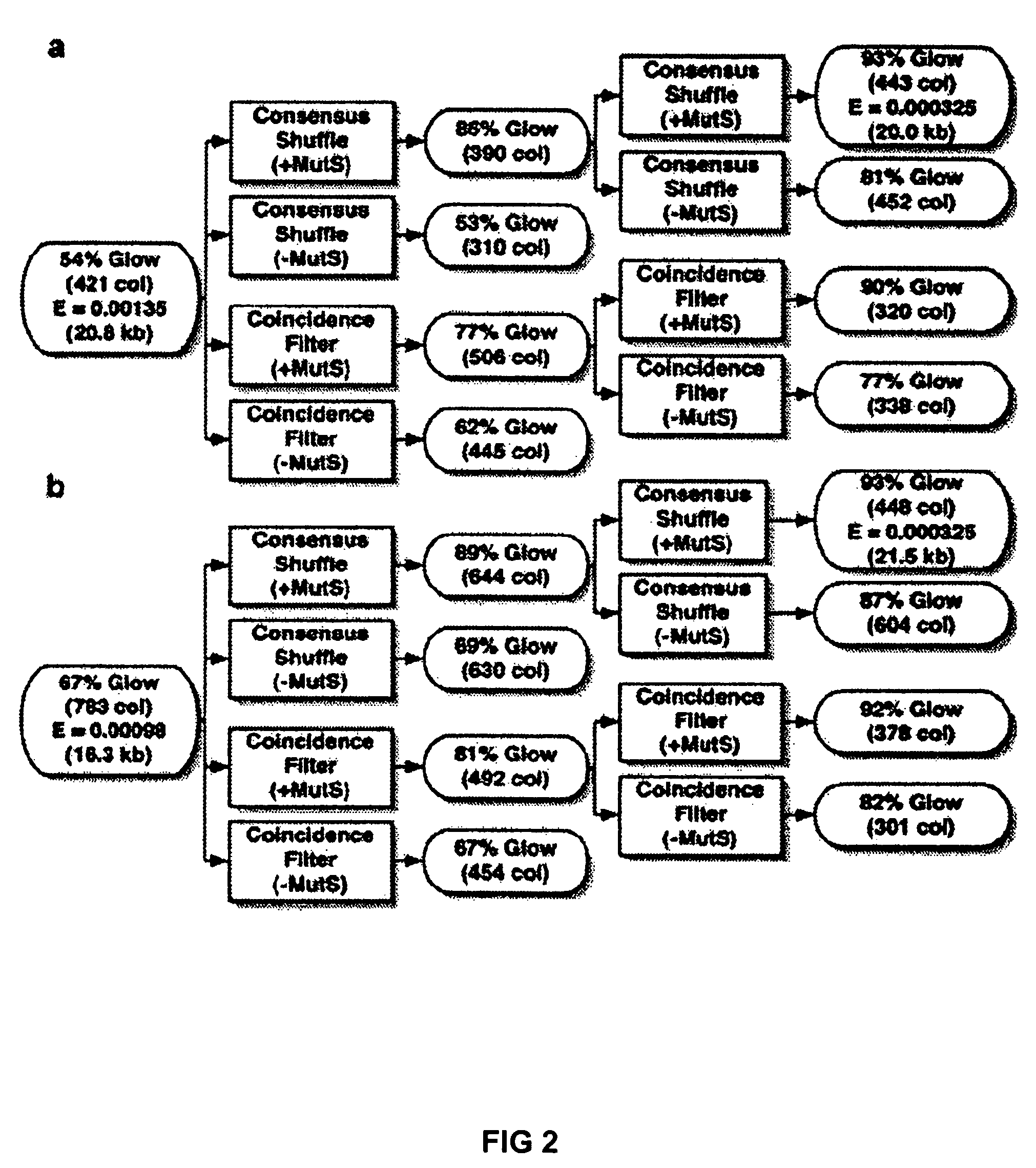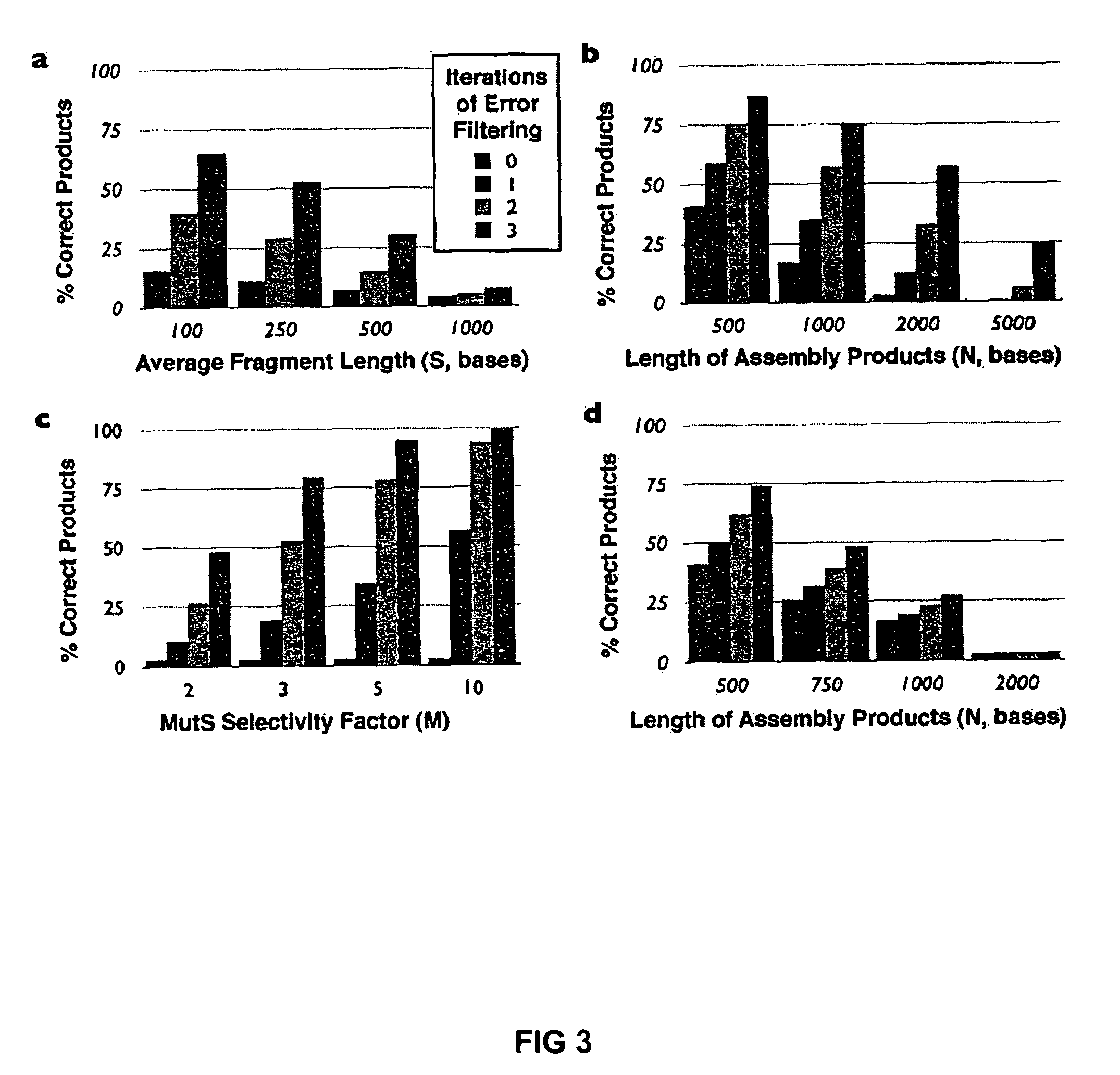Method of error reduction in nucleic acid populations
a nucleic acid and error reduction technology, applied in the field of biochemistry, can solve the problems of difficulty in constructing any new desired larger dna construct, no synthetic or biochemical process is ever completely efficient and accurate, and it is generally impractical to directly construct large segments or assemblies of dna sequences larger than 400 base pairs
- Summary
- Abstract
- Description
- Claims
- Application Information
AI Technical Summary
Benefits of technology
Problems solved by technology
Method used
Image
Examples
examples
[0023]To create an error filter, we constructed a fusion protein between Maltose Binding Protein (MBP) and the mismatch binding protein from Thermus aquaticus (MutS) with a C-terminal His6 tag (MBP-MutS-H6). MBP-MutS-H6 was overexpressed and purified from E. coli to greater than 95% purity. MBP-MutS-H6 immobilized on amylose resin was shown to selectively retain a 40-mer heteroduplex containing a deletion mutation over wt homoduplex.
[0024]To demonstrate error correction, unpurified 40-mer oligonucleotides were assembled by PCR to produce a 760 bp gene encoding green fluorescent protein (GFPuv). Two independent preparations of GFPuv containing typical gene synthesis errors (Table 1) were re-hybridized and subjected to two iterations of coincidence filtering or consensus shuffling. For consensus shuffling, each population was split into three pools and cleaved with distinct restriction endonucleases, producing fragments with an average size of 150 bp and a size range of 4-396 bp. Frag...
PUM
| Property | Measurement | Unit |
|---|---|---|
| time | aaaaa | aaaaa |
| affinity | aaaaa | aaaaa |
| purity | aaaaa | aaaaa |
Abstract
Description
Claims
Application Information
 Login to View More
Login to View More - R&D
- Intellectual Property
- Life Sciences
- Materials
- Tech Scout
- Unparalleled Data Quality
- Higher Quality Content
- 60% Fewer Hallucinations
Browse by: Latest US Patents, China's latest patents, Technical Efficacy Thesaurus, Application Domain, Technology Topic, Popular Technical Reports.
© 2025 PatSnap. All rights reserved.Legal|Privacy policy|Modern Slavery Act Transparency Statement|Sitemap|About US| Contact US: help@patsnap.com



